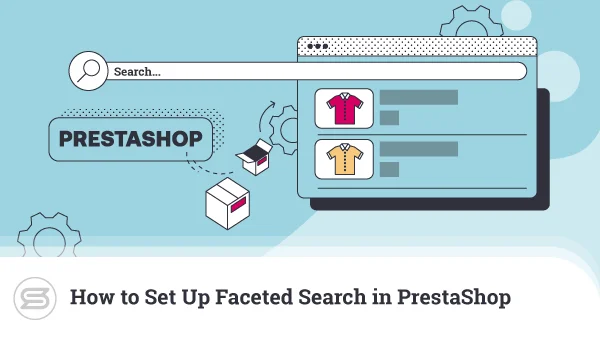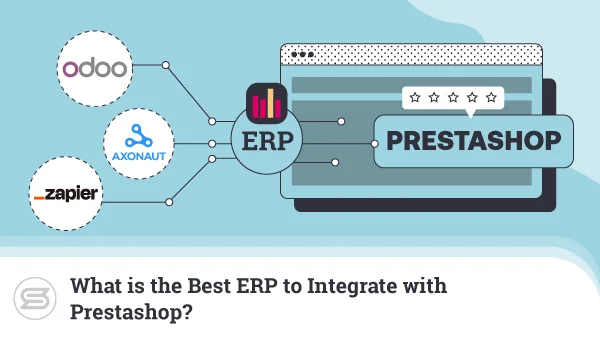Prestashop vs Shopify – Which One Should You Choose?
We can safely say that one of the biggest growth factors for the world’s ecommerce industry is the rising popularity of platforms like Shopify and PrestaShop.
Taking advantage of them, you can launch and run a fully-functional, professional-looking online store even if you don’t have any advanced technical skills. You may be wondering which one is the best fit for your project. Let’s find out…
What is PrestaShop?
PrestaShop is an open-source ecommerce platform launched in 2007 by French developers Bruno Leveque and Igor Schlumberger. It was one of the few available applications of this kind and was rather popular with online store owners in its early days.
Although it’s been overtaken by other applications, there’s no shortage of webmasters who still prefer PrestaShop mainly because of its modular architecture, incredible versatility, and intuitive backend interface.
The community supporting the app is quite active, and in addition to an evergrowing range of add-ons, you can find a vast pool of helpful resources in case you get stuck.
What is Shopify?
Shopify was founded back in 2004 after Tobias Lütke and Scott Lake, a couple of young entrepreneurs, tried to set up an online store for snowboarding equipment. They were not happy with the available ecommerce platforms and decided to launch their own.
Today, Shopify is a publicly-traded company with over 5,000 employees and a market cap of close to $180 billion.
According to BuiltWith, Shopify is the second most popular ecommerce platform after WooCommerce, powering over 3.6 million online stores. The goal is the same as PrestaShop’s – to let people with limited technical knowledge build their own ecommerce projects.
The approach, however, is different.
Shopify is a hosted ecommerce platform. This means that after you sign up for an account, Shopify sets up the application on its own servers and is responsible for keeping it up and running. Your only job is to manage the site through the backend.
Shopify does a lot of the heavy lifting for you as a service provider, but the downside is that you have less control over the entire project. For example, if you grow unhappy with the performance or pricing, you won’t be able to just take your site and move it to a different provider – you’ll need to start from scratch with another host.
PrestaShop Pros & Cons
Pros:
- Free – PrestaShop is an open-source application and completely free to use for unlimited online shops.
- User-friendly – PrestaShop is one of the best-known self-hosted ecommerce applications, available in most auto-installers offered by hosting providers. Even the manual installation isn’t that hard, and the backend doesn’t present a steep learning curve.
- Tons of add-ons – You can find thousands of themes and modules that change your store’s appearance and expand its functionality. Thanks to them, PrestaShop is suitable for just about any ecommerce project.
- Ecommerce analytics – PrestaShop has built-in tools to help you monitor your site’s progress. You can track traffic and conversion rates and see how users interact with your online shop directly from the platform’s backend.
- Minimal hardware resources – Compared to other self-hosted platforms, PrestaShop has a relatively clean default installation, meaning it will run smoothly even on more resource-limited hosting plans.
- Multi-lingual support – PrestaShop has been translated into more than 70 languages and supports multiple currencies, meaning that store owners can reach a much more diverse audience.
- Easy payment processor integration – Integrating a payment system into your PrestaShop store is easy, and thanks to the wide range of add-ons, the options are pretty much limitless.
Cons:
- Limited scalability – PrestaShop is an excellent launchpad for new projects, but the platform struggles when the number of visitors starts to grow.
- Design limitations – You can find numerous themes that help change your store’s appearance, and you will get some customization options with them. However, creating a truly unique design can be tricky, especially if you have no web development background.
- Official support is paid – By default, PrestaShop doesn’t give you access to an official support system. You can get one if you pay close to $300, which might be too steep for many store owners.
Shopify Pros & Cons
Pros:
- Quick and easy setup – With Shopify, you don’t need to worry about opening a hosting account, installing an application, or configuring anything. After you sign up – Shopify will do the rest.
- A WYSIWYG theme editor – You can choose from a range of different themes for your new store and finish off the design using the intuitive What You See Is What You Get (WYSIWYG) editor.
- Abandoned cart recovery – Shopify’s abandoned cart recovery system helps lower the number of users who don’t complete their order and increase revenues by as much as 15%. Best of all – it’s available even on the cheapest plans.
- Shopify POS – Store owners in selected countries can use Shopify’s products to process sales both online and in their brick-and-mortar shops.
- The Shopify app store – An enormous marketplace hosts over 4,000 apps that can transform your Shopify store and extend its functionality beyond measure.
- SEO-friendly – Shopify comes with a search engine-friendly site structure and plenty of tools to help you achieve decent rankings even without the need for additional plugins.
- A dedicated support team – Shopify is a premium product and offers 24/7 support through live chat, email, and phone (after a requested call back).
Cons:
- Transaction fees – Unless you use Shopify’s own payment processor (which is available in selected countries only), you will need to pay transaction fees on every sale you register through your online shop.
- Lack of features – Shopify is not as feature-rich as some of its competitors, and you may need additional apps to activate the functionality you need.
- It’s a hosted platform – Using a platform like Shopify saves you some of the trouble of finding a hosting provider and setting everything up, but the downside is that you have a lot less control over your project.
How to Choose the Right Ecommerce Platform?
The platforms’ strengths and weaknesses will help you determine what to look for in the future, but you’ll need a more detailed analysis to choose the best option before you jump head-first into this venture.
Ease of use
At first glance, it looks like Shopify has a definitive edge in the usability department. Getting started with this solution is as easy as activating an account. You don’t need to worry about finding a hosting provider, installing the application, activating an SSL certificate, etc.
The backend interface is unlikely to confuse even complete novices, and since Shopify itself is in charge of keeping the site going, fewer things could go wrong.
That said, PrestaShop is not exactly a nightmare to work with, either. Sure, you are more involved in the initial setup and get more tools and features to play with, resulting in a slightly steeper learning curve. Overall, however, PrestaShop is hailed as one of the most user-friendly open-source shopping carts around, and mastering it shouldn’t be a problem.
Themes
By default, your Shopify account gives you 9 free themes, and you can find 70 more templates in the application’s official repository. By contrast, PrestaShop’s marketplace hosts over 2,500 themes and thousands more available on third-party websites. Overall, you will have a wider range of choices with PrestaShop, but easier design customization with Shopify.
Performance
Since Shopify is a hosted platform, it is the service provider’s job to ensure your site is running smoothly. By signing up, you trust the company to keep your store up and running. Judging by the platform’s popularity, it seems to be doing a good job, but if you’re not happy with the loading speeds – there’s little you can do apart from starting from scratch with another application.
With PrestaShop, a lot more responsibility lies on your shoulders. The shopping cart’s default installation is lightweight and has no specific hardware requirements. Still, your website’s performance depends on many factors, including the hosting environment and the number of plugins you install. Make sure you consider all these aspects when you’re setting up your new project.
Extensions and add-ons
Both PrestaShop and Shopify have official marketplaces with around 4,000 extensions each. This pretty much guarantees that you can add any missing features with a module or an app.
The wide variety of add-ons also helps the user because they can have the exact functionality needed without cluttering the backend or affecting the site performance. Unfortunately, many useful add-ons are paid, so you need to keep a closer eye on your budget.
SEO
Out of the box, Shopify offers an SEO-friendly site structure, as well as a number of other built-in tools that help you improve your store’s search engine rankings. In addition to all this, the app store hosts many SEO add-ons that should help you push your site further up the search results page.
When it comes to PrestaShop, you also have some default features that can help with SEO, but without extra effort, you might struggle to get the results you’re after. Luckily, there are plenty of SEO add-ons for the open-source shopping cart, as well.
Security
As a Shopify user, it is your responsibility to use a strong password for your account. If you want an extra layer of security – you can also activate the built-in two-factor authentication system. Apart from that, there’s not much else you can (or need to) do.
Shopify is responsible for properly configuring its servers and protecting all the online stores it hosts. You once again trust the service provider’s experts to secure your site. A track record spanning well over a decade with no major security incidents is a great indicator they’re doing a good job so far.
PrestaShop store owners have a lot more to think about. After setting up a hosting account, it is their responsibility to get an SSL certificate for the website. PrestaShop and all its themes and modules must be kept updated at all times. As an admin, you need to be on a constant lookout for suspicious activity.
Hosting your ecommerce site with ScalaHosting will alleviate some of this burden. As soon as you point your domain to the correct server, you will receive a free SSL certificate to encrypt the connection between your site’s visitors and the server.
In addition to this, all hosting plans are protected with SShield, our proprietary security system that monitors your account in real-time and uses artificial intelligence to block malicious attacks. If a breach occurs, SShield immediately sends out a detailed report on what happened and what you can do to fix the issue.
Support
Shopify is a premium product, and users can rely on a team of experts who know the platform inside out, available 24/7 at their disposal. You can the official support over live chat, email, or phone if you have requested a call back beforehand.
PrestaShop also offers official support through a ticketing system, but access is granted only to those who spend a little over $300 on a premium support plan. Those who can’t afford the extra fee can rely on the global PrestaShop community and freely available help articles and tutorials.
Pricing
Shopify’s cheapest plan costs just $9 per month but only allows you to add products and accept payments on an existing site. If you want to create a fully-featured online store, you better pick between the following plans:
- Basic Shopify at $29/mo
- Shopify at $79/mo
- Advanced Shopify at $299/mo
The more expensive plans are suitable for bigger stores and offer lower transaction fees, as well as the ability to have more people working on the same site. Additionally, the pricier packages bring multi-lingual support and detailed reports on how your business is doing, plus multiple advanced features related to inventory and shipment management.
PrestaShop, on the other hand, is free and open source. You can download it and install it anywhere you want, using it for unlimited projects. Just bear in mind the costs associated with the hosting services required to have your site up and running.
Both PrestaShop and Shopify may require additional premium themes and plugins, so you need to keep these expenses in mind as well.
PrestaShop vs Shopify: Which One to Choose?
Both PrestaShop and Shopify can let you create a good-looking, functional online store. There’s not much difference when it comes to usability, either. Indeed, getting started with Shopify is easier, and the whole platform is designed to be as beginner-friendly as possible.
Still, PrestaShop is hardly the most complex ecommerce application on the market. Thanks to the enormous support the project receives from the community – you’re never more than a Google Search away from a helpful guide or a tutorial.
The major question you need to ask yourself when picking between the two is whether you prefer a hosted application or not.
If you want to get started quickly and willing to relinquish some control over your project, then Shopify may be the application for you. However, you need to bear in mind the potential downsides, like the fact that it’s not up to you to optimize the site’s performance and the entire store’s dependence on a single provider.
If you want to be fully involved in the project, PrestaShop is easily the better option of the two. With it, you are in full control of the entire store and don’t need to rely on other parties to keep it going.
ScalaHosting and Ecommerce Projects
Users of self-hosted applications like PrestaShop face one major challenge – finding a hosting provider for their website. The hosting service’s quality can significantly impact the store’s uptime and performance – two metrics that can make or break an entire project.
At ScalaHosting, we’ve used our decades of experience to ensure ecommerce sites get the best possible hosting environment. We offer packages specifically optimized for the most popular shopping cart applications, including PrestaShop.
Our solutions cater to both big and small online stores. New ecommerce sites with limited budgets can easily use our shared plans as a launchpad. The affordable packages give you the performance you need while your project is still growing, and when the traffic levels pick up – you can check out our managed VPS solutions.
With them, you take control over an entire virtual server with a dedicated IP and guaranteed hardware resources, making for an even faster, more reliable, and more secure hosting environment.


Conclusion
Deciding which ecommerce platform you’ll use is one of the most important steps when launching a new online store. The project’s entire management depends on your choice, and it’s a decision you shouldn’t take lightly.
PrestaShop and Shopify are two of the best options you have, and picking between them is not easy. To make the right choice, you have to carefully analyze their strengths and weaknesses and consider how they can help you achieve your particular objectives.
FAQ
What is the main difference between Shopify and PrestaShop?
Shopify and PrestaShop belong to two entirely different categories of ecommerce platforms. Shopify is a hosted application, meaning the developers also take care of installing, configuring, and hosting it. As long as you have an account, Shopify keeps your site running, and when you stop paying for your subscription – the project remains on their servers.
PrestaShop, on the other hand, is a self-hosted platform. You need to have a separate hosting account where you install Presta and manage your site. If, at some point, you decide to change your host – you can easily migrate the entire site to a different provider.
Which is more expensive – PrestaShop or Shopify?
Shopify’s plans, suitable for a standalone ecommerce project, start from $29 per month and could go as high as $299 per month.
PrestaShop is free to use, but you need to bear in mind the extra hosting costs and any expenses related to premium modules and themes.
Plugins and an expensive hosting plan can theoretically make a PrestaShop-based project pretty pricey, but the self-hosted application will still be the more cost-effective solution for most people.
Which is easier to use – Shopify or PrestaShop?
Because it’s a hosted platform, getting started with Shopify is more straightforward. You’re not responsible for installing, configuring, or securing the application.
With PrestaShop, you have more tasks to think about. That said, modern auto-installers and your hosting provider’s tech support experts should be able to help you out.
Once up and running, the two applications are pretty much equally easy to master.
ScalaHosting – Prestashop vs. Shopify – Which One Should You Choose



